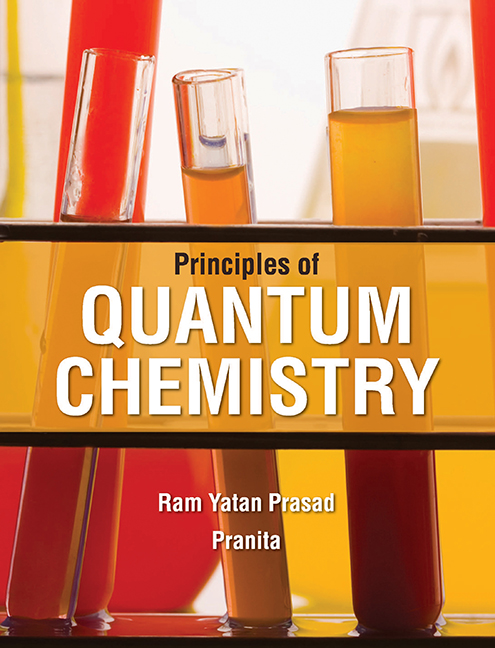Book contents
- Frontmatter
- Dedication
- Contents
- List of Figures
- List of Tables
- Foreword
- Preface
- 1 Quantum Theory
- 2 Wave–Particle Duality
- 3 Mathematical Techniques
- 4 Quantum Mechanical Operators
- 5 Postulates of Quantum Mechanics
- 6 The Schrödinger Equation
- 7 Playing with the Schrödinger Equation
- 8 Hydrogen Atom
- 9 Approximate Methods
- 10 Diatomic Molecules
- 11 Multi-electronic Systems
- 12 Polyatomic Molecules
- 13 Hückel Molecular Orbital Theory/Method
- 14 Density Functional Theory
- Glossary
- Appendix I
- Appendix II
- Appendix III
- Model Question Papers
- Index
13 - Hückel Molecular Orbital Theory/Method
Published online by Cambridge University Press: 02 December 2022
- Frontmatter
- Dedication
- Contents
- List of Figures
- List of Tables
- Foreword
- Preface
- 1 Quantum Theory
- 2 Wave–Particle Duality
- 3 Mathematical Techniques
- 4 Quantum Mechanical Operators
- 5 Postulates of Quantum Mechanics
- 6 The Schrödinger Equation
- 7 Playing with the Schrödinger Equation
- 8 Hydrogen Atom
- 9 Approximate Methods
- 10 Diatomic Molecules
- 11 Multi-electronic Systems
- 12 Polyatomic Molecules
- 13 Hückel Molecular Orbital Theory/Method
- 14 Density Functional Theory
- Glossary
- Appendix I
- Appendix II
- Appendix III
- Model Question Papers
- Index
Summary
The basic principle of Hǜckel molecular orbital (HMO) theory lies in the fact that it is absolutely necessary a one-electron treatment and the electrons remain in the p orbitals. In other words, we can assume that both the core electrons and the electrons present in the skeleton are regarded as “frozen”. It is pertinent to note that there is no interaction between s and p electrons present in the molecule.
Hǜckel (as early as in 1931) pointed out that it was possible to state the characteristics of conjugated hydrocarbons and polyenes by the quantum mechanical model, which took into consideration only p electrons. The Hǜckel HMO approximation works best for a class of alternant hydrocarbons (may be aliphatic or aromatic).
The explicit starting point for the derivation of Hǜckel method for p electron system is the Eigen value formulation of Schröodinger equation, HΨ = EΨ. Hǜckel applied this equation to molecules, keeping in view that H and Y represent molecular Hamiltonian and wave function, respectively.
Multiplying HΨ = EΨ by Ψ we have
Also multiplying both the sides by the volume element dt, Eq. (13.1) takes the form
Integrating and rearranging the above equation, we can express this as
This equation represents the energy value/expectation value of energy of the system.
Next, the molecular wave function will be approximated as a linear combination of atomic orbitals (LCAO) by using suitable basis function fi. Keep in mind that the combination of n basis function will give rise to n molecular orbitals, which can be expressed as
where, Ci = variational coefficients
and Fi = basis functions
Substituting the value of Ψ in Eq. (13.2), we have Substituting these in the above equation, we shall obtain where, N = numerator
D = denominator
Differentiating Eq. (13.5) with respect to Ci and on applying the condition of minimum to get the minimum value of E, we can write
where, N0 = first differentiation of N
D0 = first differentiation of D
The above equation can also be expressed as
From this, we shall get the following set of linear equations:
These linear equations can be expressed in a more general form as
When one proceeds to solve Eq. (13.8), one will find for each root the ratio of the expansion coefficients, and finally, one will get the coefficients uniquely by normalising each orbital.
- Type
- Chapter
- Information
- Principles of Quantum Chemistry , pp. 641 - 732Publisher: Foundation BooksPrint publication year: 2014

